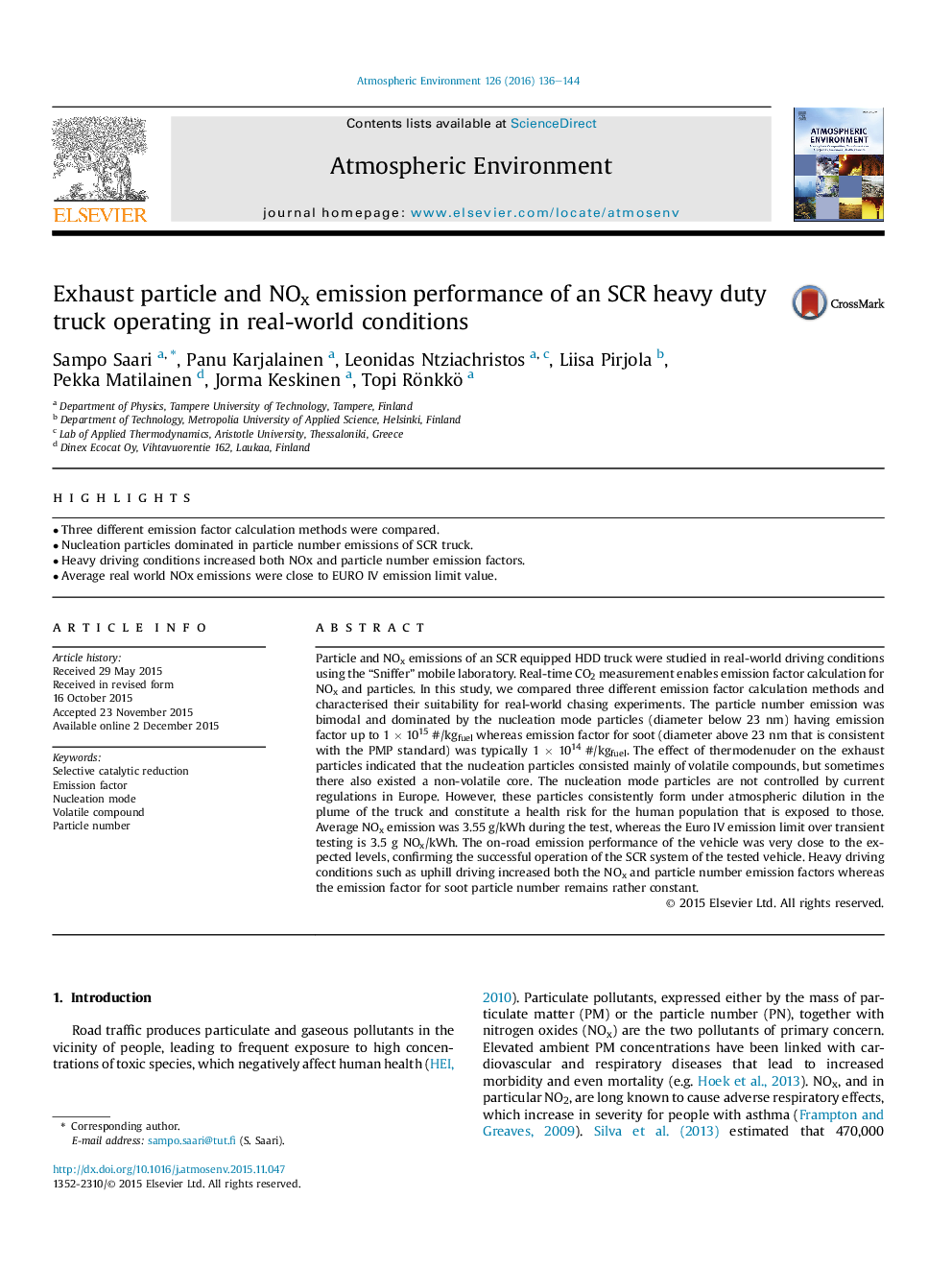| Article ID | Journal | Published Year | Pages | File Type |
|---|---|---|---|---|
| 6337174 | Atmospheric Environment | 2016 | 9 Pages |
Abstract
Particle and NOx emissions of an SCR equipped HDD truck were studied in real-world driving conditions using the “Sniffer” mobile laboratory. Real-time CO2 measurement enables emission factor calculation for NOx and particles. In this study, we compared three different emission factor calculation methods and characterised their suitability for real-world chasing experiments. The particle number emission was bimodal and dominated by the nucleation mode particles (diameter below 23Â nm) having emission factor up to 1Â ÃÂ 1015 #/kgfuel whereas emission factor for soot (diameter above 23Â nm that is consistent with the PMP standard) was typically 1Â ÃÂ 1014 #/kgfuel. The effect of thermodenuder on the exhaust particles indicated that the nucleation particles consisted mainly of volatile compounds, but sometimes there also existed a non-volatile core. The nucleation mode particles are not controlled by current regulations in Europe. However, these particles consistently form under atmospheric dilution in the plume of the truck and constitute a health risk for the human population that is exposed to those. Average NOx emission was 3.55Â g/kWh during the test, whereas the Euro IV emission limit over transient testing is 3.5Â g NOx/kWh. The on-road emission performance of the vehicle was very close to the expected levels, confirming the successful operation of the SCR system of the tested vehicle. Heavy driving conditions such as uphill driving increased both the NOx and particle number emission factors whereas the emission factor for soot particle number remains rather constant.
Keywords
Related Topics
Physical Sciences and Engineering
Earth and Planetary Sciences
Atmospheric Science
Authors
Sampo Saari, Panu Karjalainen, Leonidas Ntziachristos, Liisa Pirjola, Pekka Matilainen, Jorma Keskinen, Topi Rönkkö,
